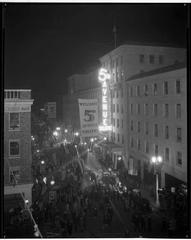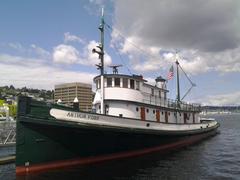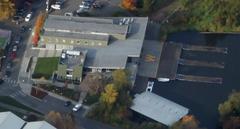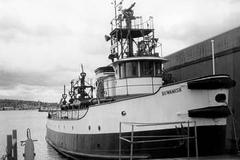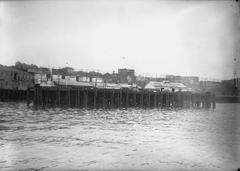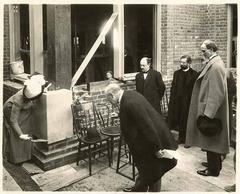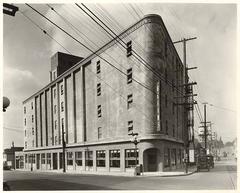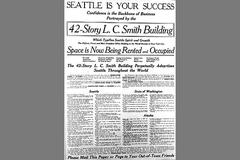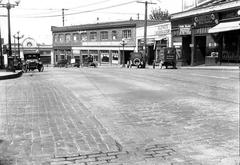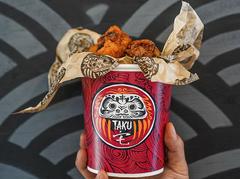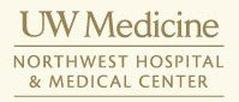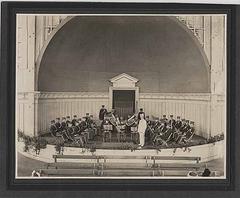
Seattle Urban Gardens: Visiting Hours, Tickets, and Historical Guide
Date: 04/07/2025
Introduction to Seattle Urban Gardens
Seattle’s urban gardens are a vibrant intersection of history, culture, sustainability, and community. With origins stretching back to the early 20th century, the city’s gardens have transformed neglected spaces into green oases, reflecting a long-standing commitment to inclusivity and ecological stewardship. Today, more than 80 community gardens, including the pioneering P-Patch Program, offer fresh produce, environmental benefits, and welcoming spaces for cultural exchange and social connection. Whether you’re a local or a visitor, Seattle’s urban gardens invite you to explore horticultural traditions, participate in educational events, and enjoy the tranquility of nature in the urban landscape (Seattle Department of Neighborhoods, Community Gardens ASAP).
Table of Contents
- Early Roots of Urban Gardening in Seattle
- The Emergence of the P-Patch Program
- Social and Cultural Significance
- Environmental and Health Impacts
- Design and Adaptation of Urban Gardens
- Visiting Seattle Urban Gardens: Hours, Tickets, and Accessibility
- Nearby Attractions and Special Events
- Community Engagement and Education
- Challenges and Resilience
- Frequently Asked Questions (FAQs)
- Conclusion and Call to Action
Early Roots of Urban Gardening in Seattle
Seattle’s urban gardening tradition began in the early 1900s in response to urbanization and a lack of green spaces. Residents and community groups reclaimed vacant lots and underutilized land, transforming them into productive gardens. These early grassroots initiatives were characterized by resource-sharing and creative land use, such as establishing gardens atop parking garages and along public rights-of-way (communitygardensasappleseeds.info, seattlecommunitygardening.blogspot.com).
The Emergence of the P-Patch Program
A defining moment in Seattle’s gardening history came with the 1970s launch of the P-Patch Community Gardening Program. Named after the Picardo family—whose farm became the city’s first community garden—this city-supported initiative, managed by the Seattle Department of Neighborhoods, brought structure and advocacy to urban gardening. By 2025, the P-Patch network had grown to over 80 gardens citywide, serving thousands of residents from diverse backgrounds (communitygardensasappleseeds.info, seattle.gov).
Social and Cultural Significance
Seattle’s urban gardens are more than places to grow food—they are essential community hubs. Gardens such as the Danny Woo International District Community Garden foster social connection, cultural exchange, and environmental stewardship. Initiatives like Cultivating Communities specifically address equity, ensuring low-income residents have access to green spaces and fresh produce (communitygardensasappleseeds.info, seattle.gov).
Environmental and Health Impacts
Urban gardens in Seattle play a significant role in advancing sustainability. They help reduce urban heat, improve air quality, and support biodiversity through organic and eco-friendly practices. Access to fresh produce is critical, especially in neighborhoods with limited grocery options. As Dr. Sarah Owens of the University of Washington notes, “Community gardens play a crucial role in urban environments by bringing people together, promoting sustainable living, and providing access to fresh produce. These green spaces offer a respite from the concrete jungle and serve as centers of social engagement, education, and empowerment” (communitygardensasappleseeds.info).
Design and Adaptation of Urban Gardens
Seattle’s urban gardens are designed for both practicality and inclusivity. Individual plots, communal areas, raised beds, and accessible pathways are common features, making gardening possible for people of all ages and abilities (communitygardensasappleseeds.info). Over time, gardens have adapted to urban development pressures through relocation and expansion, as seen with the Interbay P-Patch and others (seattle.gov).
Visiting Seattle Urban Gardens: Hours, Tickets, and Accessibility
- Hours: Most community gardens are open year-round from dawn to dusk.
- Tickets: Admission is free; special events or workshops may require registration or a fee.
- Accessibility: Many gardens offer wheelchair-accessible features such as wide paths and raised beds. Check individual garden websites for specific details (seattle.gov).
Nearby Attractions and Special Events
Urban gardens are often located near Seattle’s historical and cultural sites. For example, the Danny Woo Garden is close to the Chinatown-International District. Many gardens host seasonal festivals, plant sales, art shows, and educational tours—check the P-Patch calendar or garden-specific websites for current events.
Community Engagement and Education
Education and engagement are at the core of Seattle’s gardening movement. Gardens offer workshops, classes, and volunteer days on topics like organic gardening, composting, and pollinator support. These programs, often run in partnership with schools and nonprofits, foster lifelong learning and environmental stewardship (communitygardensasappleseeds.info).
Challenges and Resilience
Seattle’s urban gardens face challenges such as land development pressures, funding limitations, and uncertain land tenure. The resilience of the gardening community is demonstrated by ongoing advocacy and adaptability, ensuring these green spaces remain integral to Seattle’s identity (seattle.gov).
Frequently Asked Questions (FAQs)
Q: What are the visiting hours for Seattle urban gardens?
A: Most gardens are open daily from dawn to dusk. Check individual websites for exceptions.
Q: Do I need tickets to visit?
A: No—gardens are public spaces, but special events may require registration or a fee.
Q: Are gardens accessible?
A: Many gardens feature accessible paths and raised beds. Confirm accessibility on each garden’s website.
Q: Can I volunteer or join workshops?
A: Yes, most gardens welcome volunteers and offer educational programs.
Q: Are guided tours available?
A: Some gardens offer guided tours; check the P-Patch calendar or garden sites.
Conclusion and Call to Action
Seattle’s urban gardens are living examples of the city’s dedication to sustainability, community, and cultural heritage. Plan your visit by checking the Seattle Department of Neighborhoods P-Patch program for details on hours, events, and volunteer opportunities. For a more personalized experience, download the Audiala app, and follow local garden programs on social media.
Visuals and Media
- High-quality images: Use alt tags like “Seattle P-Patch community garden with raised beds,” “Visitors enjoying Danny Woo International District Community Garden,” and “Seasonal festival at Seattle urban garden.”
- Interactive map: Embed Seattle urban garden locations with links to visiting information.
- Virtual tours: Link to video highlights of popular gardens.
Internal Links
Discovering the Seattle Space Needle: A Monumental Icon
The Seattle Space Needle, built for the 1962 World’s Fair, is an enduring symbol of innovation and architectural prowess. Rising 605 feet, it offers breathtaking views of downtown, Puget Sound, Mount Rainier, and the surrounding mountains.
History and Significance
Designed by John Graham, Victor Steinbrueck, and Edward E. Carlson, the Space Needle reflects the futuristic optimism of the 1960s and remains a beloved landmark, featured in countless films and visited by millions annually.
Visiting Hours and Tickets
- Hours: Daily, 10:00 AM – 8:00 PM (last admission 7:30 PM; check for variations during holidays/events).
- Tickets: Adults $35, seniors $30, youth $25, children under 5 free. Advance online purchase recommended.
Getting There and Tips
Located at Seattle Center, the Space Needle is accessible via Link Light Rail (Seattle Center Station), buses, and rideshare. Parking is available but fills quickly. Sunset visits provide unforgettable city views.
Nearby Attractions
Explore MoPOP, Chihuly Garden and Glass, and the Pacific Science Center. The Seattle Center Armory offers dining and entertainment.
Accessibility
Fully wheelchair accessible, with elevators and service animal accommodations.
Events and Experiences
Enhance your visit with guided tours, special events, and (when open) dining at the SkyCity Restaurant. Check the Space Needle website for updates.
FAQ
Q: What are the visiting hours?
A: Daily, 10:00 AM–8:00 PM (last admissions 7:30 PM).
Q: How much are tickets?
A: Adult $35; discounts for seniors and youth; children under 5 free.
Q: Can I buy tickets on-site?
A: Yes, but online purchase is advised.
Q: Is it accessible?
A: Yes, fully accessible.
Q: Are there nearby attractions?
A: Yes—MoPOP, Chihuly Garden and Glass, Pacific Science Center.
Conclusion
The Space Needle is a must-see, offering history, innovation, and stunning views. For details, visit the official Space Needle website.
Discover Seattle’s Botanical Gardens and Urban Green Spaces
Seattle’s botanical gardens and historical parks blend horticultural beauty, cultural heritage, and tranquility. This guide covers essential visitor information, including hours, ticket prices, accessibility, and special highlights.
Washington Park Arboretum & Seattle Japanese Garden
- Washington Park Arboretum (website): 230 acres, open daily dawn–dusk, free admission.
- Seattle Japanese Garden (website): Open March–October (Tues–Sun, 10AM–5PM), $8 adults, $6 seniors/students, children under 12 free.
- Features: Themed plant collections, tea ceremonies, guided tours. Wheelchair accessible in most areas.
Kubota Garden
- Kubota Garden (website): 20 acres, open daily dawn–dusk, free admission.
- Features: Japanese landscaping, seasonal highlights (cherry blossoms), guided tours, photography spots. Main areas accessible for wheelchairs.
Center for Urban Horticulture & Union Bay Natural Area
- CUH & Union Bay (website): Demonstration gardens, 74-acre wetland, birdwatching. Open daily dawn–dusk, free.
Volunteer Park Conservatory
- Volunteer Park Conservatory (website): Victorian glasshouse, open daily 10AM–5PM, $5 adults, $3 seniors/students, under 12 free.
- Fully accessible; combine with Seattle Asian Art Museum visit.
Olympic Sculpture Park
- Olympic Sculpture Park (website): Nine-acre waterfront park, open 6AM–10PM, free. Features sculptures, native plantings, mountain views.
Bellevue Botanical Garden
- Bellevue Botanical Garden (website): 53 acres, open daily dawn–dusk, free. Highlights include Perennial Border, Yao Garden, Ravine suspension bridge.
Community and Giving Gardens
- Seattle Giving Garden Network (website): Connects volunteers growing produce for local food banks. Public events and volunteering opportunities available.
Practical Visitor Tips
- Admission: Most gardens are free; some charge modest fees.
- Hours: Generally dawn to dusk; check websites for updates.
- Accessibility: Most are wheelchair accessible; natural areas may have uneven paths.
- Transport: Public transit and biking are encouraged; parking may be limited.
- Pets: Leash policies vary—check individual gardens.
- Etiquette: Stay on paths, do not pick plants, supervise children.
- Events: Many gardens host tours, classes, and festivals—see websites for details.
Frequently Asked Questions (FAQ)
Q: What are the visiting hours?
A: Most gardens are open dawn to dusk; check official websites for seasonal/holiday changes.
Q: Are tickets required?
A: Most are free, but some (e.g., Japanese Garden, Conservatory) charge small fees.
Q: Is parking available?
A: Varies by location; public transit is recommended.
Q: Are gardens accessible?
A: Most are, but some trails may be uneven.
Q: Can I bring my pet?
A: Check individual rules; some allow leashed dogs.
Kubota Garden: Detailed Visitor Guide
Kubota Garden in Rainier Beach is a historic 20-acre Japanese garden established by Fujitaro Kubota in the 1920s. The garden is a symbol of cultural heritage, resilience, and horticultural artistry.
- Hours: Open year-round, dawn to dusk.
- Admission: Free; donations encouraged (Kubota Garden Official Site).
- Getting There: 9817 55th Ave S; accessible via Metro bus routes 36 and 50; limited on-site parking.
- Features: Traditional landscaping, seasonal highlights, pavilion for events, scenic photography spots.
- Accessibility: Main areas wheelchair accessible; check the accessibility map for details.
- Events: Guided tours and cultural workshops available; check online event calendar.
- Visitor Tips: Wear sturdy shoes, bring water, and respect garden etiquette.
Supporting Seattle Urban Gardens
Help sustain Seattle’s gardens by donating, volunteering, or attending fundraising events. Participation ensures these sites remain open and vibrant for future generations.
Summary and Encouragement to Explore
Seattle’s urban gardens are living testaments to the city’s commitment to sustainability, cultural heritage, and community empowerment. From the P-Patch program to iconic spaces like Danny Woo Garden, these sites offer accessible green spaces, educational programs, and meaningful opportunities for engagement. Despite urban challenges, Seattle’s gardening community remains resilient. For personalized tours and updates, download the Audiala app and follow local garden programs online (Seattle Department of Neighborhoods, Community Gardens ASAP).
References and Useful Links
- Seattle Department of Neighborhoods P-Patch Gardening Program History, 2025
- Community Gardens in Seattle: Cultivating Health, Community, and Sustainability, 2025, Community Gardens ASAP Blog
- The Impact of Community Gardens in Seattle, 2025, Community Gardens ASAP Blog
- What Lies Beneath: Seattle Community Gardening History, 2022, Seattle Community Gardening Blog

